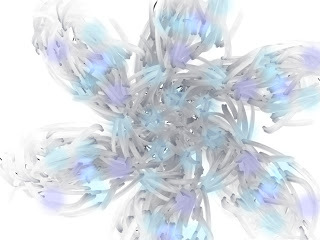Pearl Zhu's Blog, page 35
August 19, 2025
Professionalism
By incorporating these principles into your work, you can enhance your professionalism, build a positive reputation, and contribute effectively to your organization.
 Being professional means that the individual not only has the skill but also presents high-quality professionalism, such as positive mentality and attitude, fair judgment, effective decision-making, and problem-solving.
Being professional means that the individual not only has the skill but also presents high-quality professionalism, such as positive mentality and attitude, fair judgment, effective decision-making, and problem-solving.Improving professionalism involves adopting certain behaviors, attitudes, and practices that enhance one's effectiveness and reputation in a work or organizational setting. Here are some general rules of thumb to guide you in improving professionalism:
Maintain Integrity and Ethics: Always act with integrity and adhere to ethical standards. This includes being transparent, keeping promises, and taking responsibility for your actions.
Communicate Effectively: Develop strong communication skills, both verbal and written. Listen actively, articulate your thoughts clearly, and tailor your communication style to your audience.
Demonstrate Reliability and Accountability: Be dependable by meeting schedule, fulfilling commitments, and taking ownership of your work. Acknowledge mistakes and learn from them.
Dress Appropriately: Follow the dress code or norms of your workplace. Dressing appropriately shows respect for the organization and its culture.
Show Respect and Courtesy: Treat colleagues, clients, and customers with respect and courtesy. Be polite, considerate, and open to diverse perspectives and ideas.
Develop Emotional Intelligence: Cultivate self-awareness, empathy, and the ability to manage your emotions. This helps in building strong interpersonal relationships and resolving conflicts effectively.
Pursue Continuous Learning: Stay updated with industry trends and continuously seek opportunities for personal and professional development. This demonstrates commitment to growth and adaptability.
Exhibit a Positive Attitude: Maintain a positive and constructive attitude, even in challenging situations. This can influence the work environment positively and encourage collaboration.
Practice Time Management: Prioritize tasks, set realistic goals, and manage your time efficiently to enhance productivity and reduce stress.
Seek and Provide Feedback: Be open to receiving feedback and use it for improvement. Also, provide constructive feedback to others in a respectful manner.
High professionalism is a foundation to bring wisdom in the workplace, which often means a positive atmosphere, growth mindsets, intellectual stimulation, a culture of learning, open-minded leadership, and collaborative & professional working relationships.
By incorporating these principles into your work, you can enhance your professionalism, build a s reputation, and contribute effectively to your organization.
Follow us at: @Pearl_ZhuLaw of Understanding
The Law of Understanding underscores the importance of context in shaping meaning and effectiveness in communication and actions.
 The Law of Understanding posits that the meaning and effectiveness of communication, concepts, and actions are heavily influenced by the context in which they occur.
The Law of Understanding posits that the meaning and effectiveness of communication, concepts, and actions are heavily influenced by the context in which they occur. This principle emphasizes that understanding the surrounding circumstances—such as cultural, social, historical, and situational factors—is crucial for interpreting messages and behaviors accurately.
Key Aspects of Understanding:
Cultural Context: Different cultures have unique norms, values, and communication styles. Understanding these cultural differences is essential for effective interaction and avoiding misunderstandings.
Situational Context: The specific circumstances surrounding an event or interaction can significantly impact its meaning. Factors like timing, location, and social dynamics play a critical role.
Historical Context: Awareness of historical events and trends can provide deeper insights into current issues and behaviors, influencing how information is perceived and understood.
Interpersonal Context: The relationships between individuals involved in communication impact how messages are received. Trust, familiarity, and cultural dynamics all contribute to interpretation.
Contextual Adaptation: Effective communicators and leaders are those who can adapt their messages and strategies to fit the context appropriately, enhancing clarity and engagement.
Implications for in-depth Understanding:
Communication: Tailoring messages to fit the audience and context can lead to more effective communication and reduced misunderstandings.
Decision-Making: Contextual awareness can improve decision-making by considering all relevant factors, leading to more informed choices.
Conflict Resolution: Understanding the context of conflicts can facilitate better resolution strategies by addressing underlying issues rather than just symptoms.
The Law of Understanding underscores the importance of context in shaping meaning and effectiveness in communication and actions. By appreciating and adapting to the various contexts surrounding interactions, individuals and organizations can enhance their understanding, empathy, and professionalism.
Interdisciplinary Innovation
Innovation needs to be managed in a structured way, leveraging emerging technologies to accelerate the progress of global society.
 Innovation involves creating new methods, whether concrete (like a new product) or abstract (like a new philosophy). It's vital for sustainable progress, pushing us to find alternatives to old ways for improving problem solving.
Innovation involves creating new methods, whether concrete (like a new product) or abstract (like a new philosophy). It's vital for sustainable progress, pushing us to find alternatives to old ways for improving problem solving.The Role of Art: During the Renaissance, "art" encompassed a wide range of skills, from rhetoric to painting to science. It was seen as a source of power, enabling practitioners to excel in their fields. This concept blurred the lines between disciplines. Humanism, with its emphasis on critical thinking and empirical observation, further fueled scientific advancement.
The Impact of Technology: Throughout history, technology has played a crucial role in spreading knowledge. The printing press, photography, motion pictures, and the Internet have all revolutionized how we access and share information. Information technology (IT) is essential for innovation, encompassing computer hardware, software, telecommunications, and databases. IT enhances organizational capabilities, supporting business operations, decision-making, relationships with stakeholders, and the pursuit of competitive advantages.
How IT Drives Innovation
Data Management: Information systems act as delivery systems for data stored in databases, which support the operations and management functions of an enterprise. Data warehouses contain archival data that can be mined for insights to develop new products, improve customer service, and reach new customers.
Big Data: The collection and processing of quantitative and textual data has evolved into "big data," which enables innovative business models. Analyzing big data can lead to evidence-based medicine, resource efficiency, and personalized recommendations for products.
Collaboration Systems: IT facilitates communication and teamwork within and across organizations. Workflow systems route documents automatically, while groupware allows individuals to work simultaneously on shared projects.
Virtual Organizations: IT enables new organizational structures like network and cluster organizations. Network organizations consist of corporate partners supplying goods and services through a central hub firm, while cluster organizations utilize permanent and temporary teams of individuals with complementary skills.
Crowdsourcing: IT facilitates crowdsourcing, where individuals coordinate their work using information systems to create products. Companies use crowdsourcing to generate ideas, evaluate concepts, co-develop products, and promote goods and services. However, the success of IT depends on skillful deployment and integration with other resources of the firm.
As things change, the old paradigm becomes incompatible with the new reality, and there occurs a digital paradigm shift occurs. Innovation needs to be managed in a structured way, leveraging emerging technologies to accelerate the progress of global society.
Follow us at: @Pearl_Zhu
Progressive
With a common value guiding us, and passion that we fuel insight. We’ll be the change agent that reinvents a better world.
 In a world that spins so fast,
In a world that spins so fast, let’s take a moment to reflect,
Focus on the good around us,
see the views from different angles.
With eyes that are open wide,
we can change the way we see,
Embracing all the possibilities,
setting our spirits free.
Stay positive,
keep shining bright,
In every challenge,
find the light of truth.
Prioritize what matters most,
With every step,
we’ll make it solid.
Progressive minds,
we’ll pave the way for growth,
Creating change with each new day.
When the road gets rough and tough,
let’s lift each other with common beliefs,
Together we can make the difference,
reach for vision that extends higher and further.
With insight as our compass,
we’ll navigate the storm,
Building bridges,
breaking barriers,
embracing diverse viewpoints.
Let’s celebrate the journey,
every initiative, big or small,
With a vision that inspires,
we can continue to inspire
In the tapestry of talent growth,
let’s weave a brighter thread,
With truth as our foundation,
we’ll forge ahead.
So let’s lift each other up,
with every idea we share,
In this journey of togetherness,
we’ll find a better way to make progress.
With a common value guiding us,
and passion that we fuel insight,
We’ll be the change agent,
that reinvent a better world.
Follow us at: @Pearl_Zhu
Wisdom
By recognizing and cultivating these forms of wisdom, individuals can enhance their decision-making, problem-solving skills.
 Wisdom has something to do with making a sound judgment. Wisdom is a multifaceted concept that encompasses various forms and expressions. But true wisdom is transcendental knowledge, which often comes through nonlinear thinking and abstract insight. Here are some key types of wisdom:
Wisdom has something to do with making a sound judgment. Wisdom is a multifaceted concept that encompasses various forms and expressions. But true wisdom is transcendental knowledge, which often comes through nonlinear thinking and abstract insight. Here are some key types of wisdom:Philosophical Wisdom: A deeper understanding of fundamental questions about life, existence, and ethics. Encourages critical thinking, self-reflection, and the exploration of moral dilemmas.
Practical Wisdom: The ability to make sound decisions based on experience and situational awareness. It involves judgment, agility, and the application of knowledge to real-life situations.
Emotional Wisdom: The capacity to understand and manage emotions, both in oneself and in others. It involves empathy, compassion, and emotional intelligence, enabling better interpersonal relationships.
Spiritual Wisdom: Insights gained through spiritual experiences and the pursuit of meaning. It often involves a sense of connection to something greater than oneself, promoting inner peace and fulfillment.
Social Wisdom: Knowledge and understanding are about social dynamics and human behavior. It involves the ability to navigate social situations effectively, fostering cooperation and harmony.
Cultural Wisdom: Insights derived from cultural traditions, practices, and beliefs. It enriches one’s perspective by incorporating diverse viewpoints and historical contexts.
Intuitive Wisdom: It's the ability to understand something instinctively, without the need for conscious reasoning. It is often described as a “gut feeling” or instinct, guiding decisions based on deep-seated knowledge or experiences.
Different types of wisdom offer unique perspectives and tools for navigating changes, and contribute to a richer understanding of ourselves and the world around us. By recognizing and cultivating these forms of wisdom, individuals can enhance their decision-making, problem-solving skills.
Finding niche
Finding your niche is an ongoing process that may require adjustments over time.
 Understanding and defining a niche is crucial for businesses, content creators, and individuals looking to specialize or find their unique place in a market or field. Create clear, specialized career tracks and progression opportunities for niche talent.
Understanding and defining a niche is crucial for businesses, content creators, and individuals looking to specialize or find their unique place in a market or field. Create clear, specialized career tracks and progression opportunities for niche talent. Finding your niche involves identifying a specific area of focus or expertise where you can excel and provide value, whether in business, career, or personal interests.
Here are some steps to help you find your niche:
Self-Assessment: Identify Your interests and passions; reflect on activities or topics you enjoy and are passionate about. Consider what you love doing in your free time or subjects you are naturally drawn to.
Assess Your Skills and Strengths: Evaluate your skills and strengths. Think about what you are good at and what others often seek your help with.
Consider Your Values: Determine what is important to you, such as helping others, innovation, or sustainability. Aligning your niche with your values can lead to greater satisfaction.
Market Research: Analyze market demand, research potential niches to see if there is a demand for them. Look for gaps in the market or underserved areas where you can provide unique value. Study the competition; examine existing competitors in potential niches. Identify what they offer and consider how you can differentiate yourself or offer something unique. Identify your target audience; determine who your ideal audience or customer is. Understand their needs, preferences, and challenges to tailor your niche to their requirements.
Experimentation and Feedback: Test your ideas; experiment with different niches by creating small projects, offering services, or writing about topics of interest. This can help you gauge interest and refine your approach. Gather feedback from peers, mentors, or potential customers. Use their insights to adjust and improve your niche focus. Assess the outcomes of your experiments and feedback. Determine which niche aligns best with your skills, interests, and market demand.
Commit and Develop: Commit to your niche; once you have identified a niche that meets your criteria, commit to it and focus your efforts on developing expertise in that area. Build your brand; establish a personal or business brand around your niche. Create content, products, or services that highlight your expertise and value. Stay informed about trends and changes in your niche. Continuously improve your skills and adapt to evolving market needs to maintain relevance.
Finding your niche is an ongoing process that may require adjustments over time. By aligning your mindset, interests, skills, and market opportunities, you can carve out a space where you can thrive and make a meaningful impact.
Follow us at: @Pearl_ZhuStrategic Understanding
Organizations that properly identify and address necessary mindset changes are significantly more likely to enhance strategic understanding & redesigns.
 Strategic thinking, planning, and execution are crucial for organizational success. Strategic planning is a disciplined approach that guides an organization's purpose and activities, especially concerning the future. It concentrates resources on a few key objectives, ensuring everyone works towards the same goals and can adapt to change.
Strategic thinking, planning, and execution are crucial for organizational success. Strategic planning is a disciplined approach that guides an organization's purpose and activities, especially concerning the future. It concentrates resources on a few key objectives, ensuring everyone works towards the same goals and can adapt to change.Strategic Mindset: Developing a strategic mindset involves cultivating the ability to think critically and plan effectively for the future. A strategic mindset is essential for leaders and individuals who want to navigate complex environments and make informed decisions. Here are some steps to develop a strategic mindset:
Understand the Big Picture: Increasing contextual awareness; stay informed about industry trends, market dynamics, and global developments. This helps in understanding how external factors can impact your organization or goals. Build long-term vision; focus on long-term goals rather than just immediate tasks. Consider how current actions align with future objectives.
Enhance Analytical Skills and Strategic Communication
Critical Thinking: Question assumptions and consider multiple perspectives. Evaluate the validity of information and the potential impact of decisions.
Data-Driven Decision Making: Use data and analytics to inform decisions. Analyze patterns and trends to anticipate future challenges and opportunities.
Encourage Innovation and Creativity: Encourage brainstorming and creative thinking. Be able to explore unconventional solutions and take calculated risks. Be flexible and open to change. Adapt strategies based on new information and evolving circumstances.
Develop Problem-Solving Skills: Focus on identifying the root causes of problems rather than just symptoms. This helps in developing effective and sustainable solutions. Determine which issues require immediate attention and which can be addressed later. Allocate resources accordingly.
Effective Communication: Clearly articulate strategic goals and the rationale behind decisions. Ensure that all stakeholders understand and are aligned with the strategy. Take a collaborative approach; work with others to gather diverse insights and foster a sense of shared ownership in strategic initiatives.
Continuous Learning and Improvement: Regularly seek feedback from peers, mentors, and stakeholders to gain different perspectives and improve strategies. Reflect and learn; after implementing strategies, reflect on what worked well and what didn’t. Use these insights to refine future approaches.
Stay Goal-Oriented: Keep the end goals in mind and ensure that all actions and decisions contribute to achieving these objectives. Establish metrics to track progress and make adjustments as needed to stay on course.
Strategic Planning & Implementation: It defines the organization's purpose and sets realistic goals within a specific timeframe. It communicates these goals, fosters ownership, and focuses resources on key priorities, providing a basis for measuring progress and adapting to change.
Strategy involves difficult decisions about what is most important for achieving organizational effectiveness. It typically spans several years and needs adjustments over time. The way a strategic plan is developed depends on the organization's leadership, culture, complexity, environment, and size.
Organizations that properly identify and address necessary mindset changes are significantly more likely to enhance strategic understanding and achieve successful redesigns. By incorporating these practices into daily routines, individuals can develop a strategic mindset that enables them to anticipate challenges, seize opportunities, and drive long-term success.
Follow us at: @Pearl_ZhuPower in Unseen for Leading Transcendental Innovation
Organizations should meet their business needs and take a logical and differentiated approach to build their organizational innovation strength.
 The world becomes more dynamic; change is for renewal; innovation is for renewal. Transcendental innovation involves creating something entirely new, whether a product, philosophy, or approach. It often requires moving beyond conventional methods and pre-existing beliefs.
The world becomes more dynamic; change is for renewal; innovation is for renewal. Transcendental innovation involves creating something entirely new, whether a product, philosophy, or approach. It often requires moving beyond conventional methods and pre-existing beliefs.Practices for Fostering Innovation
Knowledge Sharing: Openly sharing knowledge allows others to build upon it, increasing overall understanding and innovation.
Impersonal Criteria: Evaluating contributions based on accuracy and efficiency, not on personal characteristics, promotes innovation.
Creative Talent: Encouraging talented professionals whose work is judged on merit rather than adherence to traditional beliefs is key.
Dedicated Resources: Organizations should allocate specific resources to innovation.
Diverse Workforce: A diverse workforce and openness to unconventional ideas are beneficial.
Organizational Culture: Top management should support innovation and provide leadership.
Reward Innovation: Individuals who push for innovation should be rewarded. Organizations should encourage experimenting, accepting that not all attempts can succeed.
The rate of change increases, and the exchange of ideas becomes easier. Organizations are at different stages of business maturity; they should meet their business needs and take a logical and differentiated approach to build their organizational innovation strength.
Judgmental Wisdom
By honing judgmental wisdom, individuals can make more informed, fairer decisions, ultimately contributing to shape a better and more just society.
 Judgmental wisdom refers to the capacity to assess situations, people, and decisions critically while balancing personal biases and societal norms. It involves discerning the right course of action based on an understanding of context, values, and ethics.
Judgmental wisdom refers to the capacity to assess situations, people, and decisions critically while balancing personal biases and societal norms. It involves discerning the right course of action based on an understanding of context, values, and ethics.Key Characteristics of Judgmental Wisdom
Critical Thinking: The ability to analyze information and perspectives objectively before forming conclusions.
Empathy: Understand others' feelings and circumstances, which informs fair judgments and decisions.
Moral and Ethical Insight: Recognize the moral implications of decisions and actions, promote fairness and justice.
Contextual Awareness: Consider the broader context, including cultural, social, and situational factors, when making judgments.
Self-Awareness: Recognize one’s biases and limitations, which helps in making more balanced and informed decisions.
Advantages:
-Improve Decision-Making: A well-rounded perspective leads to more thoughtful and effective choices.
-Stronger Relationships: Empathy and understanding foster better interactions and reduce conflicts.
-Enhance Problem-Solving: Critical thinking allows for innovative solutions by considering multiple viewpoints.
Challenges in Developing Judgmental Wisdom:
-Bias and Prejudice: Personal biases can cloud judgment, leading to unfair assessments.
-Overthinking: Excessive analysis can result in indecision or paralysis.
-Emotional Influence: Strong emotions may skew judgment, necessitating emotional regulation.
Judgmental wisdom is a vital aspect of personal and social development. By honing judgmental wisdom, individuals can make more informed, fairer decisions, ultimately contributing to a better and more just society.
Refine
So let the world bear witness, as I influence and take my place. I’ll refine the journey, and I’ll do it with wisdom.
 In the shadows of the past,
In the shadows of the past,I’ve been hiding from the light,
Carrying the weight of being misjudged,
that never felt quite right.
But I try to break down-
the silo perspective,
ready to break free,
It’s time to refine rules,
embrace who I can be.
I’ll refine my story,
rewrite lines and pages,
With every step I take,
I’m reclaiming my value and belief.
No more living in the margins,
I’ll paint with-
the full spectrum of color themes.
This is awakening moment,
it’s time to realign.
Letting go of the doubts,
that used to hold me tight,
Finding strength in the setback,
illuminating the night of darkness
Every tear reminds me of unconscious bias.
Every tough moment tells a different story,
In the journey of influence,
I’m conveying my vision and value.
So here’s to all the moments,
that shaped who I am today,
I’ll embrace the imperfections,
let them guide my way,
With an eye that’s wide open,
and a spirit that’s alive,
I’ll refine my future,
in this journey, I can inspire.
In the tapestry of unusual experience,
I’ll weave my talent threshold,
With the strength inside,
I'll take this path through
So let the world bear witness,
as I influence and take my place,
I’ll refine the journey,
and I’ll do it with wisdom.



